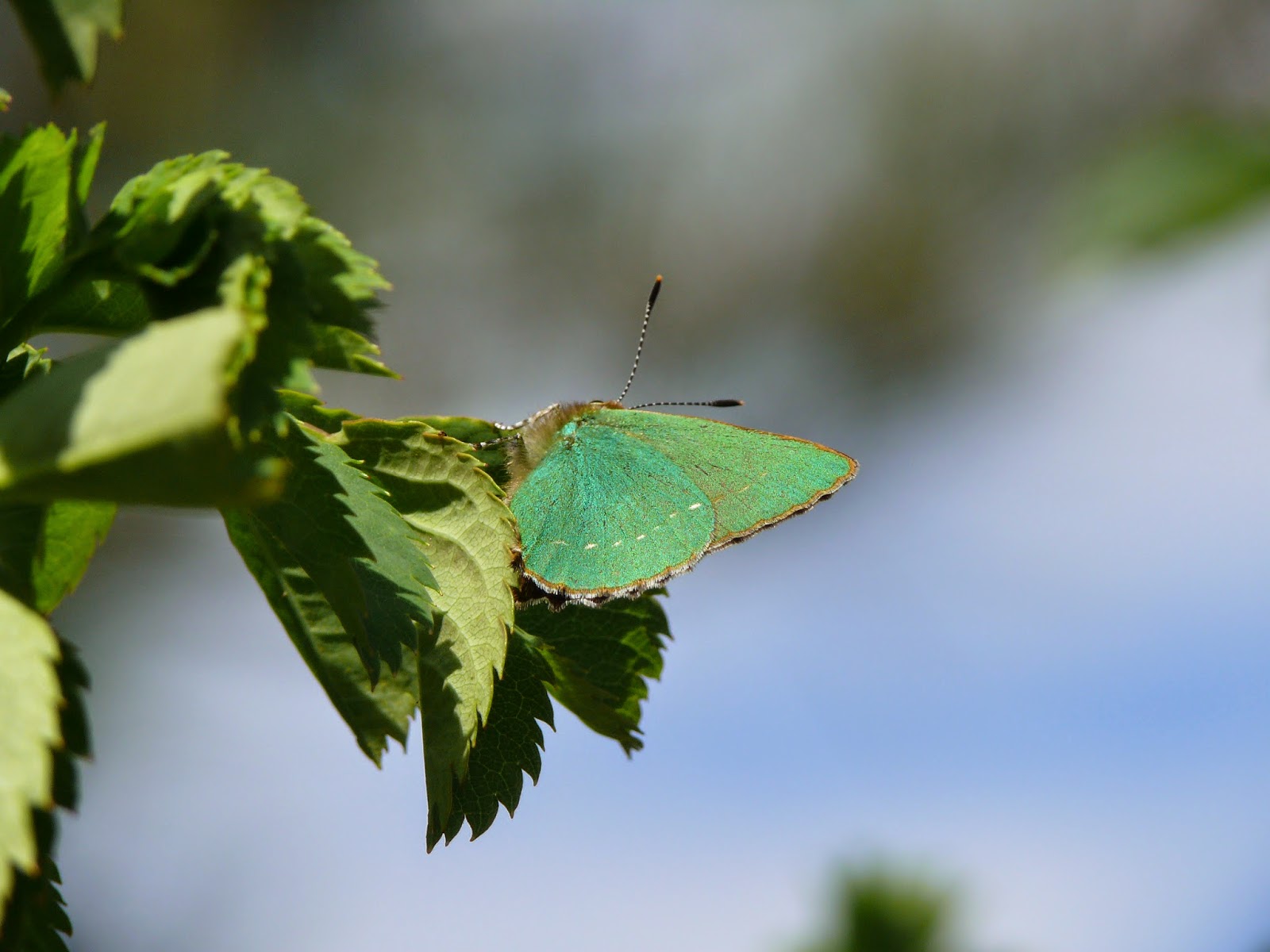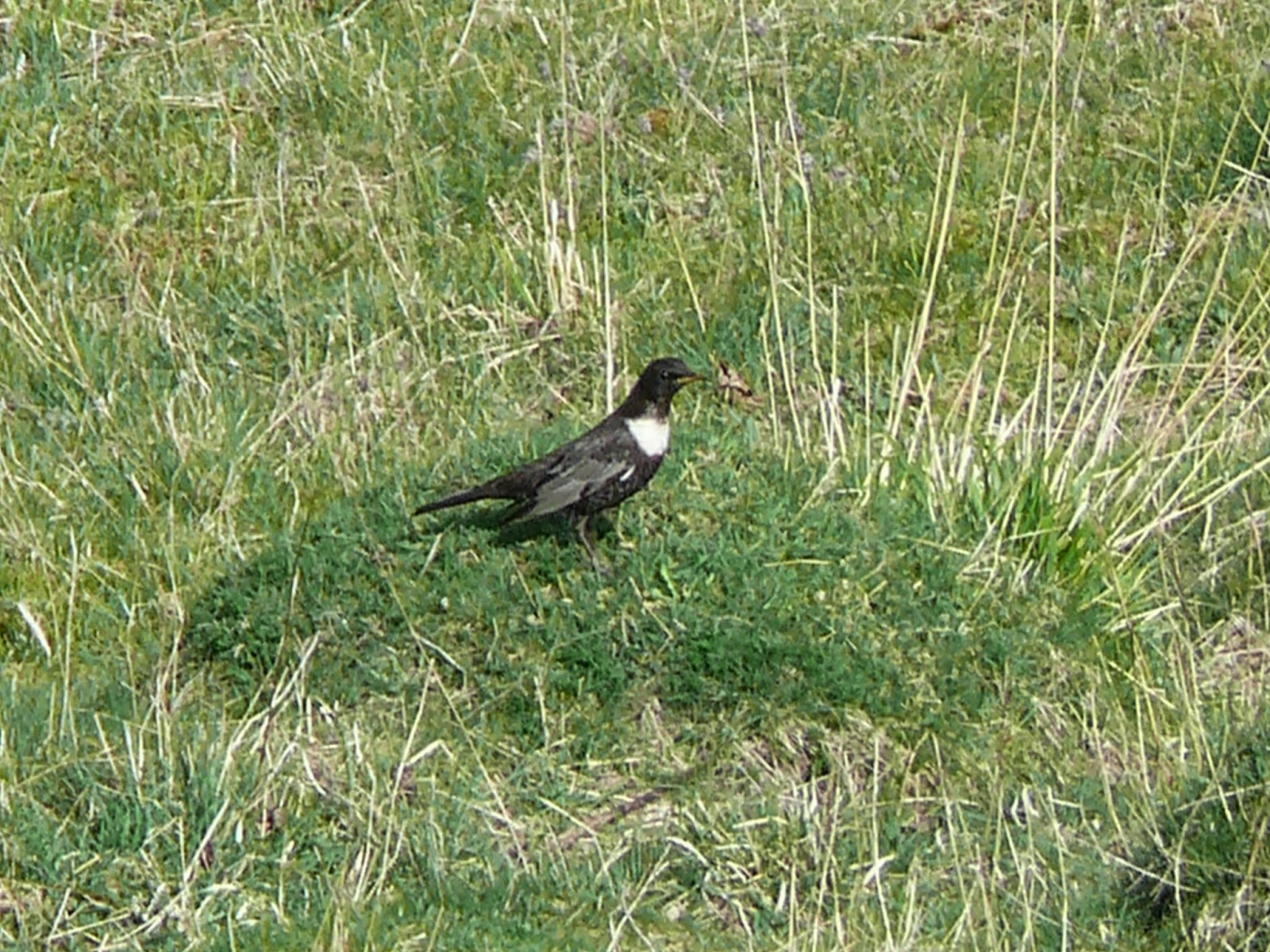1 April
We started the day with a walk around the Paphos headland.
We didn’t expect there to be much around as the previous night hadn’t been too
great, but it seemed that birds had followed the weather front over and as we
walked through the excavations to the sound of Nightingale song, there was no
doubt that there had been a fall.
Paphos Headland
We worked our way around the site seeing lots of Wheatears,
Lesser Whitethroat, with Red-throated Pipits still arriving. In addition we saw
at least three Wrynecks, a female Ruppell’s Warbler, two male and a female
Subalpine Warblers, plus a few Crtzmars and Ortolan Buntings. There was a
report of a Cinereous Bunting from earlier in the morning but we had no luck
finding that.
Hoopoe
After a very pleasant walk, we grabbed some light
refreshment at a local coffee bar on the seafront. It was very busy there as it
was a Cypriot Bank holiday for independence day. We then took a drive to Timi
beach, an excellent spot for flycatchers and wheatears but it was quite quiet.
We had an hour or so before our meal time, so we returned to the desalination
plant access road. Conditions were difficult due to strong wind, but from a
single net between the citrus trees we caught a few Blackcaps, including two re-traps,
one from last Friday, having gained weight to an impressive 26g with a fat
score 7 from a weight of 22.9 and a fat score 4. We were also astonished to
recapture a bird, 38013, that was ringed at the desalination plant on 7th
April 2014. This shows surprising site fidelity of a spring migrant.
Totals: 5 (2)
Blackcap – 5 (2)
After some food we returned to what we call the Lower Pools,
although there are no pools this year and ringed for the last hour of the day.
There were only 12 birds, but 4 5M
Whinchats were worth the effort.
5M Whinchat
Totals: 12
Whinchat – 4
Cetti’s Warbler – 1
Sardinian Warbler – 1
Whitethroat – 2
Blackcap – 3
Chiff-chaff - 1
2 April
Back to another of our previous sites today, Adonis
Falls/Mavrokolmpos Hills, but the sunshine that was forecast failed to
materialise and the catch suffered as a result. The birds just weren’t around
in the numbers needed for a good catch. We got three Greenfinch, that were the
first for us this year.
There was another Ruppell’s Warbler and a Whitethroat
amongst the few birds caught.
Whitethroat
While we tried our best to get a decent catch, we had a
Great Spotted Cuckoo and Black-eared Wheatear flying about. A Semi-collared
Flycatcher was relatively faithful to a couple of twiggy trees but shot off the
minute we moved the net. There were a few Eastern Bonelli’s about but not in
the numbers that we’ve seen in earlier years and no Wood Warblers at all,
although that was on a later date so there’s still hope.
Greenfinch Male
We then tried at a spot we have been monitoring for Cyprus
Warbler, noted that their numbers seemed good and managed to catch one.
Totals: 11
Cyprus Warbler – 1
Sardinian Warbler – 1
Ruppell’s Warbler – 1
Whitethroat – 1
Blackcap -3
Greenfinch - 3
After lunch we went up to Anarita Park where it seemed the
Wheatears were waiting for us. There was also 8 Lesser Kestrels present.
Wheatears
By using a couple of double nets we got another Isabelline
and the first Black-eared Wheatear for this year.
Isabelline Wheatear
5M Black-eared Wheatear
We had no luck with Buntings or the Tawny Pipits but there
was one Spectacled Warbler.
Spectacled Warbler
Totals: 4
Spectacled Warbler – 1
Whitethroat – 1
Isabelline Wheatear – 1
Eastern Black-eared Wheatear – 1
3 April
Another start at Kouklia. On arriving we heard a number of
Eastern Olivaceous Warblers that were fresh in but these managed to evade our
nets. Again, the catch was modest, but we were pleased to catch our first
Eastern Bonelli’s of the year and our first Hoopoe captured on Cyprus. We had
another Blackcap that we ringed last spring too.
Eastern Bonelli's Warbler
Wryneck
Hoopoe
While breakfasting on pastries from Papantoniou bakeries we
heard the unmistakeable call of Common Crane and glimpsed then as they flew up.
We also located them after our ringing session. They are probably the two
reported from Mandria on the 29th March and not reported since.
Common Cranes
It
does make you wonder where two birds of that size could have hidden for five
days!
Common Blues
Clouded Yellow
Totals: 16 (3)
Wryneck -1
Hoopoe- 1
Cetti’s Warbler - 2 (1)
Reed Warbler – 1
Sardinian Warbler - 1 (1)
Blackcap – 6 (1)
Eastern Bonelli’s Warbler -1
Chiff-chaff- 3
We drove around the local area before and after lunch but it
seemed to have gone quiet again, apart from a male Montagu’s Harrier at Agia Vavara.
Cattle Egret
We finished off with a check of Timi beach but our only new species for the
trip there was a Pied Flycatcher. There were hardly any Wheatears and very
little else.
4 April
Today we arranged to meet AC to work one of his Polis sites.
P2 - Wellingtons esential
It was just as well since the wind was far too strong on our
stretch of coastline. We put our usual five nets up and waited to see what the
day would bring. There were a few Reed Warblers and our first Great Reed
Warbler of the year.
Great Reed Warbler - age 4
We caught one particularly weighty Blackcap, tipping the
scales in excess of 27grams.
Does my bum look big in this?
It wasn’t as busy as we hoped but we almost made it to
thirty, including a pair of Spanish Sparrows.
Spanish Sparrow Mr & Mrs
While at the site we discovered the reason why stones may
often be found with dates and initials on them in streams and riverbeds. These
are proof that the area has been treated with pellets to reduce the number of
mosquitoes, and so was solved the riddle of the stones.
Total: 25 (2)
Tree Pipit – 1
Cetti’s Warbler – 0 (1)
Savi’s Warbler – 1
Reed Warbler – 6
Great Reed Warbler – 1
Sardinian Warbler -0 (1)
Lesser Whitethroat – 2
Blackcap – 6
Eastern Bonelli’s Warbler – 1
Willow Warbler – 1
Chiff-chaff – 3
Spanish Sparrow – 2
Serin - 1
Later that afternoon we drove to Evretou Dam where the level had risen so much
that several tracks and the place where we usually parked were completely
submerged. No chance of trying for pipits here as we had done in November of last year.
Evretou - full to the brim
We continued our drive, eventually reaching Nata Ford where
we tried netting the adjacent track but only got three birds.
Total: 3
Sardinian Warbler – 2
Blackcap -1
At the end of the day with less cloud than for some many
recent days, there was actually a reasonable sunset.
Sunset over Paphos
5 April
This morning was put aside to work the headland but there
was much less around than our last visit. The only really interesting birds present
were three blue-cheeked Bee-eaters.
Oneof three Blue-cheeked Bee-eaters
From there we went to Anarita Park. It was the first, real
classic bright sunshine and mild breeze day that we’d had since we arrived. The
number of birds around seemed to have really dropped off. While we scouted out
the area we saw a Montagu’s Harrier male and a few nectaring butterflies.
We tried a regular area at Anarita Hills for Spectacled
Warbler and managed to capture a young male.
5M Spectacled Warbler
Totals: 2
Spectacled Warbler – 1
Sardinian Warbler – 1
After dinner we went to the lower pools but again there
seemed few birds about, so we took a quick run to Kouklia to see whether there
was much using the river in the evening – in short no not much so we ended up
at Acheleia where a field of 100+ wagtails were near to the reeds where they’ve
roosted before. A net was put up but
although some 20 or so birds came in only three were captured.
5M Black-headed Wagtail
We did, however,
see a Gannet pass westwards out at sea. There was a Little Crake in the
seaward-side pool.
Totals: 5
Reed Warbler – 2
Black-headed Wagtail – 3
Sunset from Acheleia beach
6 April
Another visit to Kouklia, and though not especially busy we
did manage a reasonable 31 birds, including the first Eastern Oliveaceous and
Eastern Orphean Warblers of the trip. A male Ruppell’s Warbler was seen, as was
one of the Cranes again as it flew over by D.
5M Orphean Warbler
Eastern Oliveaceous Warbler
Kingfisher 6F
Male Blackcap with a heavy dusting of pollen
Total: 27 (4)
Kingfisher – 1
Wryneck -1
Nightingale – 1
Cetti’s Warbler – 0 (2)
Reed Warbler – 3
Great Reed Warbler – 1
Eastern Oliveaceous Warbler -1
Sardinian Warbler – 2
Lesser Whitethroat – 2
Whitethroat – 1
Blackcap – 11 (2)
Eastern Orphean Warbler – 1
Great Tit – 1
Goldfinch – 1
Black Francolin at Mandria
Before dinner we had a drive around Mandria with nothing of
exceptional note seen, and after dinner still fairly quiet we returned to our
Spectacled Warbler site with limited success of one bird.
Great Spotted Cuckoo at Anarita Park
We had two male Montagu’s Harriers, one of which was quartering around us whilst
we were working the Spectacle area. This is rather akin to doing Dartford
Warblers at home, wandering around placing a single double panel at various
spots and seeing what happens, minus the Harrier.
Total: 1
7 April
A birding day along the coast at Limassol starting with
Zakaki. The most exciting thing during this visit was probably an impromptu
demonstration by the heavy goods vehicle drivers at the port. There was much
honking of horns some 50 or so lorries drove around the port access road, but
whatever the problem it was solved in ten minutes or so. The disturbance didn’t
seem to bother the wildlife too much as two Little Crakes came out on the far
bank. There was also a Gargany, Ferrugenous Duck, Purple Heron and Marsh
Harrier.
Gargany drake
Moving on to Ladies Mile and the area towards the salt lake
there were few passerines around, but waders in the pools. Along with the
Kentish Plovers and Little Stints were Black-Winged Stilts, Ruff and four Sanderling.
Little Stint
We were surprised to see a largish bird fly across in front
of us as we neared the end of the beach road. On closer inspection it was a
Cream Coloured Courser, a bird that we have only seen a few times on Cyprus
since 1993.
Cream Coloured Courser at Ladies Mile
At Bishop’s Pool we started off with a Collared Flycatcher
but the wild area held little and the usual species at the pool were only
swelled by some Great Reed Warblers and seven Purple Herons.
Three of seven Purple Herons
The gravel pits were also quiet but a Collared Pratincole
was present at the new pool by the old rabbit hutches.
At Phassouri the reed bed the areas of open water were very
restricted and the habitat just isn’t what it used to be. There was little here
except the first Starling of the trip, a female Little Crake, a Little Egret,
some Snipe and a few Wheatear.









































%2B(1024x768).jpg)
%2B(1024x746).jpg)
%2B(768x1024).jpg)
%2B(1024x768).jpg)
%2B(1024x768).jpg)
%2B(1024x768).jpg)
%2B(1024x768).jpg)
%2B(1024x768).jpg)
%2B(1024x768).jpg)
%2B(1024x768).jpg)
%2B(768x1024).jpg)
%2B(768x1024).jpg)
%2B(1024x723).jpg)
%2B(768x1024).jpg)
%2B(1024x768).jpg)
%2B(1024x810).jpg)
%2B(1024x768).jpg)
.jpg)
%2B(1024x768).jpg)
%2B(1024x768).jpg)
%2B(1024x768).jpg)
%2B(1024x768).jpg)
%2B(1024x768).jpg)
%2B(1024x768).jpg)
%2B(1024x758).jpg)
%2B(1024x768).jpg)
%2B(1024x768).jpg)
%2B(1024x768).jpg)
%2B(1024x768).jpg)
%2B(1024x768).jpg)
%2B(1024x768).jpg)
%2B(768x1024).jpg)
%2B(1024x767).jpg)
%2B(1024x768).jpg)
%2B(1024x768).jpg)
%2B(1024x767).jpg)
%2B(1024x768).jpg)
%2B(1024x767).jpg)
%2B(1024x768).jpg)
%2B(1024x769).jpg)
%2B(1024x768).jpg)